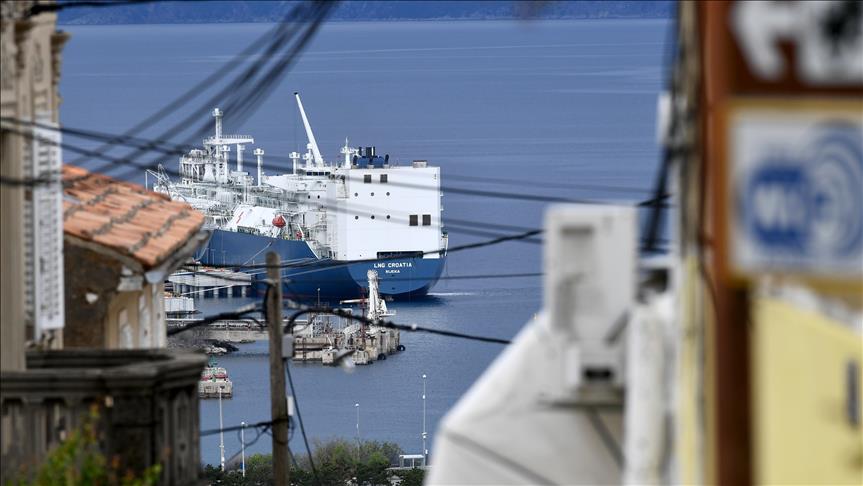The importance of US liquefied natural gas (LNG) supplies to Europe has become apparent in the wake of Europe’s energy crisis with Russia and the decline in Moscow’s natural gas supplies to the region.
Adrian Duhalt, a research fellow at Columbia University’s Center on Global Energy Policy, told Anadolu that after the gas shortages Europe faced amid the Russian invasion of Ukraine, the continent has increasingly turned to the US to secure supply.
Duhalt said the continent is better prepared to navigate through the winter in comparison to the previous winter months because the US is shipping more LNG to European markets combined with the high levels of gas storage.
Although weather and economic conditions influence gas demand, he said that for the time being, it remains to be seen to what extent winter may drive gas consumption up across Europe.
‘Now, Europe is the main export market for the booming LNG industry in the US. It is striking to see how a geopolitical event made the US a pivotal player in Europe’s energy security,’ Duhalt added.
Energy expert Danila Bochkarev revealed that, due to increased confidence over supply, the EU’s storage position will likely be more relaxed than last year, mainly due to the anticipated launch of new liquefaction capacities in the US and elsewhere.
He said S&P Global Commodity has forecast around 8.4 million tonnes per year of new North American LNG capacity to be operational before the end of 2024.
Other new projects, like Novatek’s Arctic LNG-2 (train 1), are likely to be at least partly operational even despite the sanctions, he said.
He added that there will be other projects in Mexico or Africa as Total returns to Mozambique to relaunch its LNG project there, with a final investment decision anticipated for this project this fall.
According to Bochkarev, price levels reflect consumer confidence based on supply certainty rather than on storage levels. In January last year, EU storage levels were similar to current levels, at around 83%. However, the current EU spot prices of around $350-360 per 1,000 cubic meters are much lower than in mid-January last year, when they reached $1200 per 1000 cubic meters.
‘Furthermore, even growing demand in Asia is not pushing prices up. Asia’s LNG imports increased by almost 13% in December 2023 when compared to November 2023, according to data provided by Kpler. However, it has very little impact on prices,” he said.
Nevertheless, he clarified that it is difficult to forecast the cost of supplies in the medium term because the global LNG market remains volatile and sensitive to geopolitical tensions and natural disasters.
Restrictions on piped gas from Russia led to a dramatic increase in gas and electricity prices in Europe in the second half of 2021. Since February 2022, the Russian-Ukrainian war has also escalated security and supply risks and has led to a 60% increase in European LNG imports in 2022, with US LNG meeting most of this demand.
Although Asia was previously the main destination for US LNG exports, two-thirds of cargoes were shipped to Europe over the last two years.
According to US Energy Information Administration (EIA) data, the quantity of US LNG shipped to Europe in 2022 increased by 141% compared to the previous year. Europe’s share in the US LNG basket rose to 64% after piped gas from Russia reached its lowest level in the last 40 years.
Predictions made by international research organizations signal that the US will be the world’s largest LNG exporter in 2023, although data confirming this ranking is still pending.
Ship tracking data compiled by Energy Outlook Advisors (EAO) shows global LNG demand reached an all-time high last year, rising to 401 million tons from 390 million tons in 2022 and growing 2.8% year-on-year.

